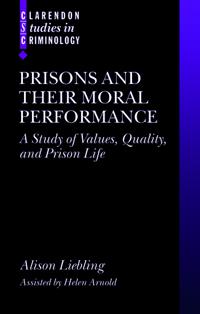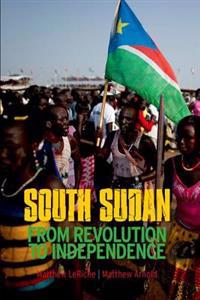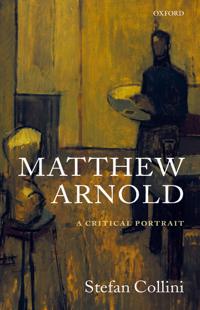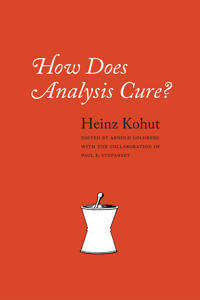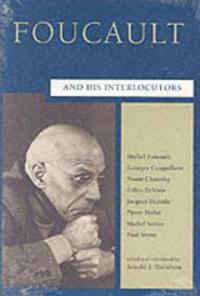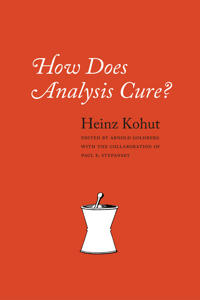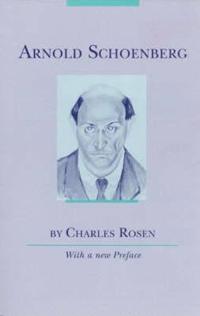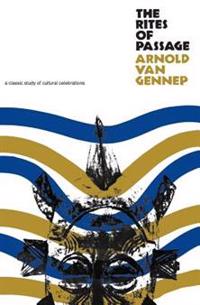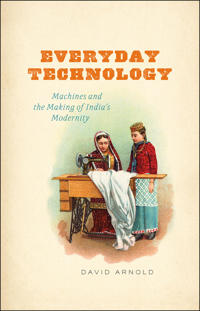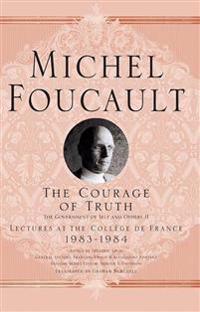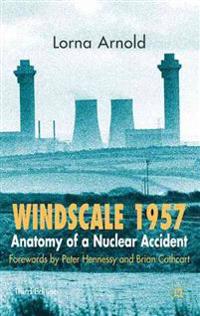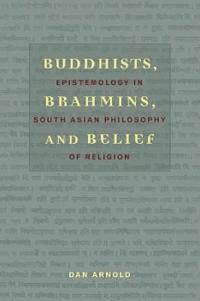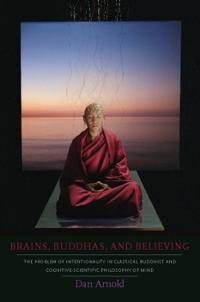Historical Commentary on Thucydides, An: v.4: Books V(25)-VII (Inbunden)
avArnold Wycombe Gomme
ISBN: 9780198141785 - UTGIVEN: 1970-05-21Musical Instruments: History, Technology and Performance of Instruments of Western Music (Inbunden)
avMurray Campbell, Clive Greated, Arnold Myers
ISBN: 9780198165040 - UTGIVEN: 2004-07-01Musical Composition in the Twentieth Century (Häftad)
avArnold Whittall
ISBN: 9780198166832 - UTGIVEN: 200003Musical Composition in the Twentieth Century builds on the foundations of Music since the First World War (first published 1977, revised edition 1988). It updates and reshapes the original text and places it in the wider context of twentieth-century serious music before 1918 and after 1975. The focu[...]
Food Tables and Labelling (Pocket)
avArnold E. Bender, David A. Bender
ISBN: 9780198328148 - UTGIVEN: 1999-02-11Prisons and Their Moral Performance (Pocket)
avAlison Liebling, Helen Arnold, Alison Liebling
ISBN: 9780199291489 - UTGIVEN: 2005-09This book constitutes a critical case study of the modern search for public sector reform. It includes a detailed account of a study aimed at developing a meaningful way of evaluating difficult-to-measure moral dimensions of the quality of prisons. Penal practices, values, and sensibilities have und[...]
South Sudan: From Revolution to Independence (Inbunden)
avMatthew Arnold, Matthew Leriche
ISBN: 9780199327904 - UTGIVEN: 2012-10In July 2011 the Republic of South Sudan achieved independence, concluding what had been Africa's longest running civil war. The process leading to independence was driven by the Sudan Peoples' Liberation Movement, a primarily Southern rebel force and political movement intent on bringing about the [...]
South Sudan: From Revolution to Independence (Häftad)
avMatthew LeRiche, Matthew Arnold
ISBN: 9780199333400 - UTGIVEN: 2013-11In July 2011 the Republic of South Sudan achieved independence, concluding what had been Africa's longest running civil war. The process leading to independence was driven by the Sudan Peoples' Liberation Movement, a primarily Southern rebel force and political movement intent on bringing about the [...]
Culture and Anarchy (Pocket)
avMatthew Arnold
ISBN: 9780199538744 - UTGIVEN: 2009-02-26First published in 1869, Culture and Anarchy debates questions about the nature of culture and society. Arnold asks what good culture can do and how it can best be disseminated. This edition reproduces the first book version and enables readers to appreciate its historical context and its continue[...]
Matthew Arnold (Häftad)
avStefan Collini
ISBN: 9780199541881 - UTGIVEN: 2008-02Matthew Arnold (1822-88), the leading man-of-letters of the Victorian age, has been the decisive influence on modern thinking about literature and criticism and his work has become an inescapable cultural reference point today. In this stylish and entertaining book Stefan Collini examines the whole [...]
Fashion (Häftad)
avRebecca Arnold
ISBN: 9780199547906 - UTGIVEN: 200910Fashion is a dynamic global industry that plays an important role in the economic, political, cultural, and social lives of an international audience. It spans high art and popular culture, and plays a significant role in material and visual culture. This book introduces fashion's myriad influences [...]
The Biology of Freshwater Wetlands (Häftad)
avArnold G. van der Valk
ISBN: 9780199608959 - UTGIVEN: 201202Global wetlands exhibit significant differences in both hydrology and species composition and range from moss-dominated arctic peatlands to seasonally-flooded tropical floodplains. They are increasingly recognized for the important services that they provide to both the environment and human society[...]
How Does Analysis Cure? (Pocket)
avHeinz Kohut, Arnold Goldberg, Paul Stepansky
ISBN: 9780226006000 - UTGIVEN: 201302The Austro-American psychoanalyst Heinz Kohut was one of the foremost leaders in his field and developed the school of self-psychology, which sets aside the Freudian explanations for behavior and looks instead at self/object relationships and empathy in order to shed light on human behavior. In "How[...]
Foucault and His Interlocutors (Pocket)
avArnold I. Davidson
ISBN: 9780226137148 - UTGIVEN: 199804Containing the debate between Michel Foucault and Noam Chomsky on epistemology and politics, this book also features significant essays by the most important French thinkers who influenced and were influenced by Foucault. Foucault's teachers, colleagues and collaborators take up his major claims, fr[...]
How Does Analysis Cure? (Inbunden)
avHeinz Kohut, Arnold Goldberg, Paul E. Stepansky
ISBN: 9780226450346 - UTGIVEN: 198406"How Does Analysis Cure?" is Heinz Kohut's final book. It is, in part, a response to criticism leveled at his two previous books, "The Analysis of the Self" and "The Restoration of the Self, but it is also a thoughtful, fluent reevaluation of his own work in psychoanalytic self psychology.[...]
Arnold Schoenberg (Pocket)
avCharles Rosen
ISBN: 9780226726434 - UTGIVEN: 1996-09In this lucid, revealing book, award-winning pianist and scholar Charles Rosen sheds light on the elusive music of Arnold Schoenberg and his challenge to conventional musical forms. Rosen argues that Schoenberg's music, with its atonality and dissonance, possesses a rare balance of form and emotion,[...]
Rites of Passage (Häftad)
avArnold Vangenner
ISBN: 9780226848495 - UTGIVEN: 196107Compares the rituals that attend the celebration of such occasions as birth, betrothal, marriage, and death in various cultures. Bibliogs[...]
Everyday Technology (Inbunden)
avDavid Arnold
ISBN: 9780226922027 - UTGIVEN: 201307In 1909 Mohandas Karamchand Gandhi, on his way back to South Africa from London, wrote his now celebrated tract Hind Swaraj, laying out his vision for the future of India and famously rejecting the technological innovations of Western civilization. Despite his protestations, Western technology endur[...]
Windscale 1957 (Pocket)
avLorna Arnold
ISBN: 9780230573178 - UTGIVEN: 2007-12In 1957, one of the two reactors built at Windscale was destroyed by fire, in the world's first major nuclear accident. This book describes the fire and what followed, and considers its causes, effects and political importance. It throws a revealing new light on an important event of fifty years ago[...]
Man: His Nature and Place in the World (Inbunden)
avArnold Gehlen
ISBN: 9780231052184 - UTGIVEN: 1988-01-14Buddhists, Brahmins, and Belief: Epistemology in South Asian Philosophy of Religion (Övrig)
avDan Arnold
ISBN: 9780231132800 - UTGIVEN: 2005-11-11In Buddhists, Brahmins, and Belief, Dan Arnold examines how the Brahmanical tradition of Purva Mimamsa and the writings of the seventh-century Buddhist Madhyamika philosopher Candrakirti challenged dominant Indian Buddhist views of epistemology. Arnold retrieves these two very different but equally[...]
Buddhists, Brahmins, and Belief (Häftad)
avDan Arnold
ISBN: 9780231132817 - UTGIVEN: 200801In Buddhists, Brahmins, and Belief, Dan Arnold examines how the Brahmanical tradition of Purva Mimamsa and the writings of the seventh-century Buddhist Madhyamika philosopher Candrakirti challenged dominant Indian Buddhist views of epistemology. Arnold retrieves these two very different but equally[...]
Brains, Buddhas, and Believing: The Problem of Intentionality in Classical Buddhist and Cognitive-Scientific Philosophy of Mind (Övrig)
avDan Arnold
ISBN: 9780231145466 - UTGIVEN: 2012-04-27Premodern Buddhists are sometimes characterized as veritable "mind scientists" whose insights anticipate modern research on the brain and mind. Aiming to complicate this story, Dan Arnold confronts a significant obstacle to popular attempts at harmonizing classical Buddhist and modern scientific tho[...]
Brains, Buddhas, and Believing (Pocket)
avDan Arnold
ISBN: 9780231145473 - UTGIVEN: 2014-05Premodern Buddhists are sometimes characterized as veritable "mind scientists" whose insights anticipate modern research on the brain and mind. Aiming to complicate this story, Dan Arnold confronts a significant obstacle to popular attempts at harmonizing classical Buddhist and modern scientific tho[...]






